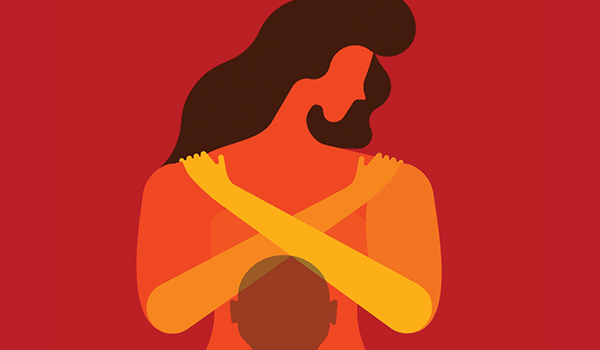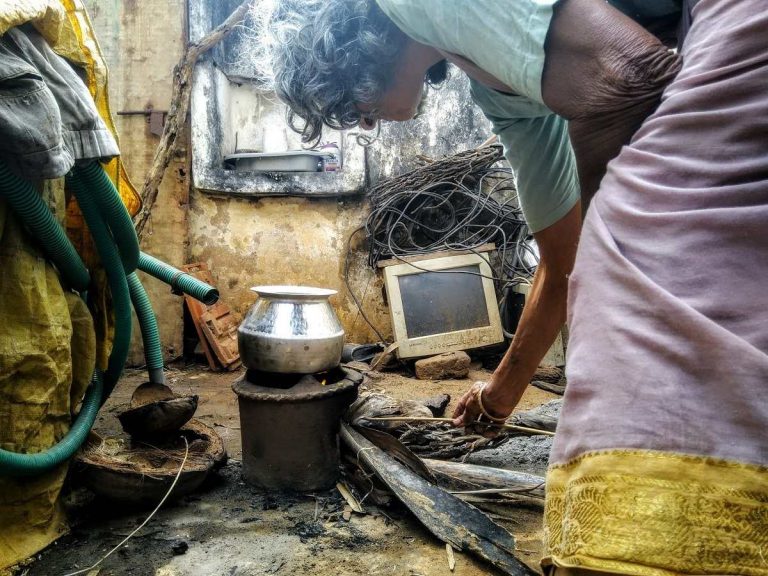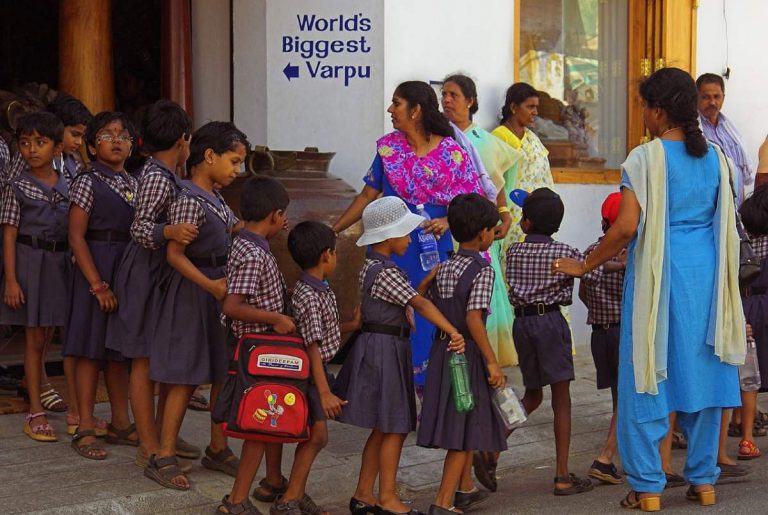Examining the Nature of the Protection of Women from Domestic Violence Act, 2005
Dwaipayan Sinha is currently pursuing Masters in International Relations from Jadavpur University,Kolkata. His interests are Foreign Policy ,Global Affairs and South Asian politics .

As one would agree, family, being the smallest unit of an organized society, is the first school for children to learn values and necessary traits to be responsible members of the society early in life and make meaningful contributions to the development of society later. It is said that no family having children as its members attains completeness without a woman. If female members of the family are ill-treated, then it would have disastrous effects on the health of the family as a whole.
Domestic violence is a pattern of abusive or violent behaviour in any relationship that is used by one partner to gain or maintain control over the other intimate partner. It can be physical, sexual or emotional in nature. The prevalence of domestic violence is arguably one of the top health concerns in the country. It is also clear that addressing the problem of domestic violence has become an urgent issue not only for the government, as it is a public health crisis and a criminal act, but also for the developing society.
India has come up with several offence-specific legislations throughout her history .There are several laws today protecting women from abuse by their partners. Section 498-A of Indian Penal Code, 1860, along with penal sanctions, was inserted to safeguard women from cruelty by their husbands and relatives in marital life.
[i] We also have the Dowry Prohibition Act, 1961.According to this Act, taking or giving dowry at the time of marriage to the bride or the bridegroom and their families is to be penalised.
[ii] Several other legislations have been enacted which prescribe remedies in the form of penal sanctions.
The judiciary is often referred to as the guardian of rights of the people and bears the responsibility of overseeing the proper delivery of justice. The Parliament enacted the Protection of Women against Domestic Violence Act, 2005 to ensure easier access to justice for the citizens. It came after a long struggle by women’s rights organisations for securing speedy remedy against domestic violence. This Act under the Constitution of India guarantees to provide more effective protection of the rights of women who are victims of any kind of violence occurring within the family and matters connected with it. One might wonder about the need for enacting such an Act when there already was much legislation on cruelty against women in the country. One might also wonder about the nature of proceedings under the Protection of Women from Domestic Violence Act, 2005- whether it is criminal or civil in nature.
It is widely acknowledged that one aspect of domestic violence, albeit minor, has been dealt with effectively as an offence punishable under Section 498-A of the Indian Penal Code. However, the issue of domestic violence continues to exist in the Indian society and is largely ignored by the civil law.
In order to remove this deficiency in civil law and keeping in mind the rights guaranteed under Articles 14, 15, 19 and 21 of the Constitution of India, the Parliament enacted the Domestic Violence Act to provide for a remedy. A closer examination of Domestic Violence Act would show that the Act deals with various acts and omissions which would constitute domestic violence by laying down an elaborate definition of “domestic violence” in Section 3 of the Act. Additionally, it also provides for different remedies that can be obtained by an aggrieved person.
Before getting into the nature of proceedings in this case, let us first have an overview of the difference between ‘criminal’ and ‘civil’ proceedings. The expression ‘civil proceeding’ includes all proceedings in which a party asserts the existence of a civil right conferred by a civil law or statute and claims relief for breach thereof. The expression ‘criminal proceeding’ connotes a proceeding which is ordinarily one, if carried to conclusion, may result in penal consequences such as imposition of sentences of death or imprisonment or fine.
Chapter IV of the Act, which contains Sections from 12 to 29, lays down some reliefs for the aggrieved person. Section 12 deals with an application to be made to the Magistrate for seeking various reliefs provided under the relevant sections. Section 13 deals with mode of service of notice. Sections 14, 15, and 16 are about the counselling and proceedings to be held in camera. Section 18 prohibits the respondent from committing any act of domestic violence. Under Section 19 and Section 20, an aggrieved person gets relief in the nature of residence order and monetary relief respectively. Temporary custody of any child can be sought under Section 21. Compensation orders can be sought under Section 22. Section 26 makes it clear that any relief available under the Domestic Violence Act can also be sought in any other legal proceedings.
[iii] So, it would be clear through the above provisions that the intention of the Domestic Violence Act is to create remedies against breach of civil rights and is nowhere connected with criminal law.
Reliance is placed on Indra Sarma vs V.K.V.Sarma where the Supreme Court examined the scope of the Act and held that the Act was enacted to “provide a remedy in civil law for protection of women from being victims of domestic violence”. The Supreme Court observed that the reliefs under Sections18 to 22 can be sought in any legal proceeding pending before a Civil Court, a Family Court or a Criminal Court.
[iv] Further, in Section 28 of the Act, a procedural provision puts down that all proceedings under the Act are governed by the provisions of the Code of Criminal Procedure, 1973, except for the savings made in the Act and subject to power of the Court to lay down its own procedure. On the other hand, it also provides relief under Section 28(2) of the Domestic Violence Act where the Court can formulate its own procedure for disposal of an application under Section 12 of the Act and is not bound to follow the Cr.P.C. Section 28(2) of the Domestic Violence Act says: “Nothing in sub-section (1) shall prevent the court from laying down its own procedure for disposal of an application under section 12 or under sub-section (2) of section 23.”
[v] In Kunapareddy v. Kunapareddy Swarna Kumari, the Supreme Court considered the nature of proceedings under the Act and held that Section 28(2) of the Domestic Violence Act empowers the Court to lay down its own procedure and the Magistrate dealing with the Domestic Violence Act is empowered to allow the amendment of the application.
Further, Chapter V provides the penal provisions, and it is at this point where we need to ponder on the difference between proceedings. Section 31 prescribes that any breach of protection order or interim protection order by the respondent is an offence under the Domestic Violence Act and is punishable with imprisonment of either description for a term, which may extend to one year or fine up to Rs. 25,000 or with both.
[vi] Section 33 deals with breach of the protection order and provides that any failure or refusal to discharge duty as directed by the Magistrate in the protection order, without any sufficient cause on the part of the protection officer, would be an offence punishable with imprisonment of either description for a term which may extend to one year or with fine of an amount up to Rs. 20,000 or with both.
[vii] But these penalties are given when there is a breach of the protection order as is contemplated under Sections 31 and 33. So, proceedings under the Protection of Women from Domestic Violence Act, 2005 are predominantly of civil nature.
At last, we would like to conclude that providing criminal punishments beside civil remedies to the affected persons has its intentions to make it more effective and expeditious in nature. As is well known, the fear of criminal procedure generally makes people behave in an obedient manner.
So, the Act is, without any further confusion, is civil in nature with criminal provisions to make it more efficacious.
[i] http://[i] http://www.legalservicesindia.com/article/472/Sec.-498A-I.P.C.–Its-Use-and-Misuse.html
[ii] https://indiankanoon.org/doc/1763444/
[iii] https://indiankanoon.org/doc/542601/
[iv] https://indiankanoon.org/docfragment/2803750/?big=2&formInput=dv%20act







